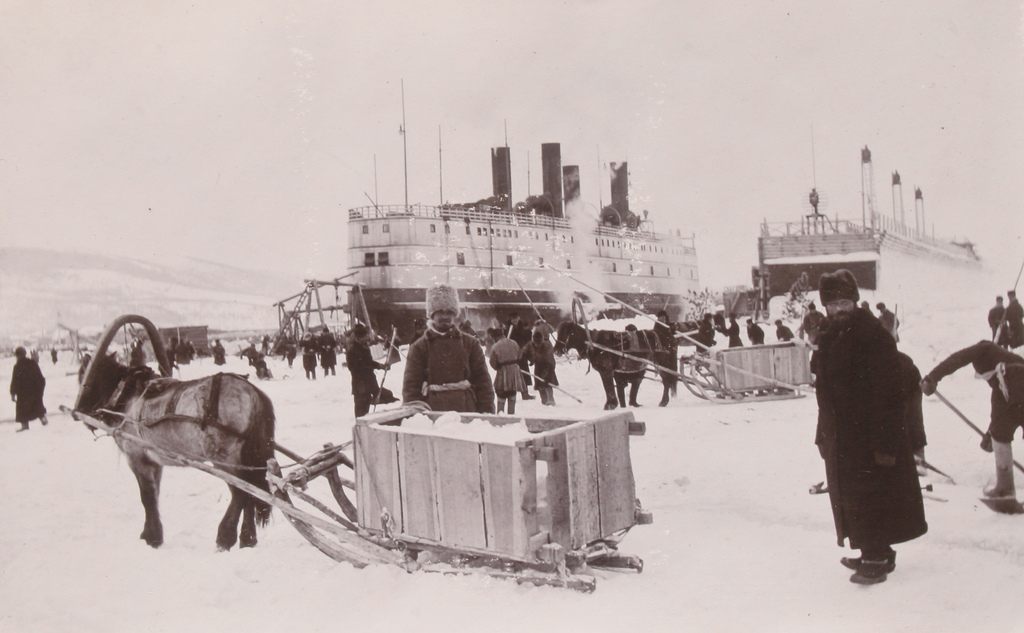Photo of the Week: An Ice-Breaking Ship Transporting Trains Over a Frozen Lake
The ice-breaking steamer the SS Baikal doing what it did best: churning through ice in freezing temperatures on Lake Baikal,in Siberia, c. 1900. (Photo: Tyne & Wear Archives & Museum/flickr)
In 1895, the Russian government commissioned an ice-breaking steamer from Armstrong Whitworth & Co, a shipbuilding company based in Newcastle upon Tyne, U.K. The vessel was needed for a lake in Siberia, some 6,000 miles away, giving rise to a unique conundrum: how do you transport a ship from northeast England to the middle of the largest country on earth?
The answer would make the inventors of IKEA proud. As it was built, the steamer was color-coded with black and white paint. Once it was completed, it was immediately dismantled into 6,900 pieces. These component parts were then transported to a small Russian village near the lake for reassembly.
It took three years for a workforce consisting largely of exiles and criminals to reconstruct the steamer, under the supervision of the Chief Engineer Isaac O’Henry. In 1899, the SS Baikal launched with one deceptively simple job: to link the eastern and western lines of the Trans-Siberian Railway across Lake Baikal.
This vast stretch of fresh water is located in one of the most hostile climates in the world. The lake itself has an area of 12,000 square meters, but its surface is frozen from January through June. Bitter winds blast across the flat plains of ice, and winter temperatures hover around -6 Fahrenheit.

The Baikal in harbor. (Photo: Tyne & Wear Archives & Museum/flickr)
But the SS Baikal was made for these conditions. At 17 meters wide and encased in an inch of steel, it could break through ice up to a meter and a half thick. It could power across the 40 miles of water that separated Port Baikal and Mysovaya Pier, all while carrying 24 train cars and a locomotive.
The SS Baikal survived less than 20 years, but not due to the harsh environment. After the scenic railway around Lake Baikal was completed in 1905, there was less need for a train ferry across the water. In the early years of Russia’s post-revolution civil war, the ice-breaking steamer was equipped with weaponry and became part of the Red Guard Baikal Fleet.
It was badly damaged by artillery fire in 1918, in a skirmish with the Czechoslavak Legion. The SS Baikal burned at Mysovaya Pier, where it had once let passengers ashore.














Follow us on Twitter to get the latest on the world's hidden wonders.
Like us on Facebook to get the latest on the world's hidden wonders.
Follow us on Twitter Like us on Facebook